Vegetable gardening is a horticultural practice that places considerable emphasis on ensuring optimal plant health, especially for tomato plants, which are popular and nutrient-demanding. This article highlights the importance of adding Epsom salt (magnesium sulfate) as an essential supplement to enhance vitality of tomato plants. This article will explore how Epsom salt can contribute to soil health, nutrient uptake, and overall plant growth by understanding its chemical composition and the physiological functions of magnesium and sulfur. We aim to enable seasoned or beginner gardeners who desire maximum production of tomatoes with the best possible quality to know how they can use Epsom salts properly depending on their various application techniques as well as timings.
Enhancing Nutrient Absorption in Tomato Plants
One of the reasons why Epsom salt is good for tomato plants is because it helps increase the intake of nutrients through significant components that are magnesium and sulphur. Magnesium is a crucial cofactor in chlorophyll production, enabling photosynthesis to take place in the plant and leading to glucose and energy necessary for nutrient uptake. Additionally, this mineral activates proteins and chlorophyll synthesis enzymes that improve plant health and growth. Sulfur enhances nutrient efficiency since it helps with amino acid formation and enzymatic reactions, among other important plant functions. The use of Epsom salt can help tomatoes assimilate more nitrogen and phosphorus supplements thereby increasing their productivity.
For optimal results, Epsom salt should be applied during critical growth stages, such as transplanting or flowering, when the plant needs its nutritional requirements most.
Importance of sulfur in improving nutrient absorption
Sulfur greatly improves nutrient absorption, especially because it plays a role in synthesizing essential amino acids and proteins within a plant. In particular, sulfur contains the constituent parts cysteine and methionine, which form protein molecules required for a variety of metabolic processes within the plant, including those associated with the mobilization and assimilation of nutrients.
Furthermore, sulphur enhances the chlorophyll formation to promote better photosynthetic activity across plants. For efficient energy generation thereby fostering macronutrient intake similar to those made with nitrogen and phosphorus ions, this action must be achieved at peak levels of photosynthesis.Sulphur being available at around 10-20 mg/kg range in soil prevents deficiency symptoms that could retard both crop growth rate as well as nutrient uptake by roots while maximizing on profits from yield quantities without having to compromise on quality but rather ensuring uniform ripening throughout entire field area
By guaranteeing sufficient availability of Sulphur, particularly during vital phases; overall nutrient use efficiency will be markedly enhanced resulting into significantly improved wellness of whole crop
Is there the possibility of Epsom salt to improve other soil nutrients?
Epsom salt is made primarily of magnesium sulfate MgSO₄ and it does help in improving the availability of other soil nutrients. As an important macronutrient, magnesium helps to stimulate enzymes for photosynthesis and nutrient uptake. Therefore, by increasing levels of magnesium within the soil, this compound can enhance the uptake of nitrogen, phosphorus, and potassium, thereby leading to improved nutrient assimilation. Additionally, sulfate component can improve soil structure and stimulate microbial activities that are also involved in nutrient cycling together with releasing more nutrients. Consequently, using Epsom salt as a supplement will not only address a lack of magnesium but also indirectly increase the availability and uptake of essential minerals, thus improving both the fertility status of soils and the general health of plants.
Preventing and Treating Common Deficiencies in Tomatoes
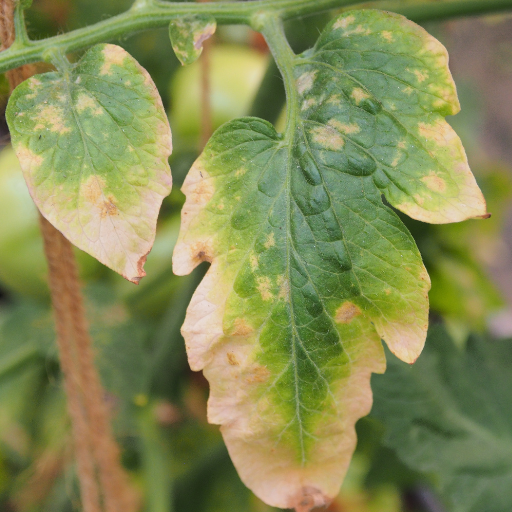
Understanding the factors that influence the growth and productivity of tomatoes is key to avoiding and treating common deficiencies. Tomato plants exhibit a primary deficiency—nitrogen (N) deficiency, which can be recognized by yellowing leaves and dwarfish growth habits. This requires that an even-balanced fertilizer containing sufficient N be mixed with organic matter to increase nutrient availability.
Phosphorus (P) deficiency often results in dark green leaves with a purplish hue. This can be cured by applying phosphate fertilizers and ensuring that the soil pH for optimal uptake of nutrients is maintained at 6.0-7.0. If there is potassium (K) deficiency, this may result in wilting and browning of the edges of leaves; hence, using potassium-rich fertilizer or organic inputs such as composted banana peels can help address this problem.
In addition, micronutrient deficiencies like iron and magnesium may manifest as chlorosis or yellowing between veins on young leaves. Iron chelates or foliar sprays may also be employed to rectify iron deficiencies, while Epsom salt (magnesium sulfate) could be used for treating magnesium deficiencies. Regular soil testing is vital as it ensures correct nutrient balance, resulting in the avoidance of deficiencies and hence healthy tomato plants.
Identifying sulfur deficiency and its impact on tomato plants
Typically, a symptom of sulfur shortage in tomato plants is chlorosis, particularly among younger leaves, whereby the margin turns yellowish, whereas the vein remains green, thus giving them a ‘striped’ look’. Also, stunted growth as well as retarded development of fruit due to the poor synthesis of amino acids leading to proteins are other indications that sulfur may not be available adequately, thereby reducing overall yields annually.As a result, soils which lack organic matter or heavily leached out contain this type of deficiency.Sulfur starvation may be corrected by the application of elemental sulfur or sulfate-based fertilizers.This should then be followed up by adequate watering so that sulfur incorporates well in the soil.Because of this, farmers should regularly check their soils for sulfur levels so that they can do something about any deficiency before it affects the plants.
Can Epsom salt help prevent blossom-end rot?
Based on my research from leading agricultural resources, Epsom salt, which contains magnesium sulfate, can contribute to overall tomato plant health but is not a direct cure for blossom-end rot. Calcium deficiency and inconsistent watering practices leading to erratic nutrient uptake are two main reasons why blossom end rot occurs in most cases. While Epsom salts can enhance nutrient uptake and promote good plant growth by supplying magnesium, calcium levels must be addressed through the addition of lime or gypsum since it enhances soil quality in order to minimize blossom-end rot. Therefore, while Epsom salt may support general plant health, it should be used with proper soil management practices to prevent blossom-end rot effectively.
Improving Photosynthesis and Energy Production
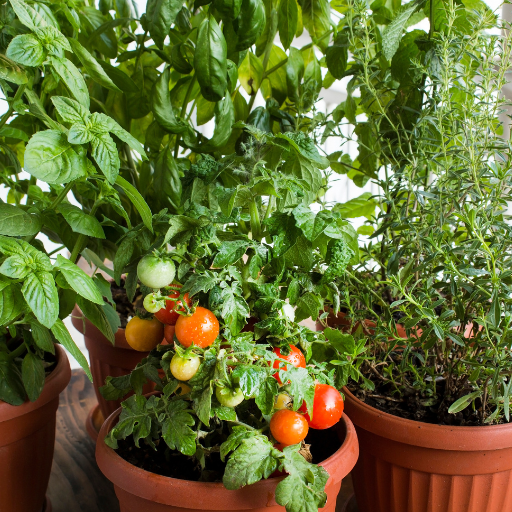
- Optimizing Light Conditions: The light intensity that plants require is crucial, as it is the source of their energy through photosynthesis. Reflective materials can be used to increase the availability of lights, especially in indoor gardens. Moreover, artificial grow lights can be employed in environments where there is insufficient natural light.
- Nutrient Management: Nitrogen, phosphorous, and potassium are crucial for vigorous photosynthetic processes in plants. Soil tests performed at regular intervals can identify nutrient deficiencies and support healthy leaf development and plant vigor through targeted fertilization.
- Watering Practices: Keeping moisture levels constant is very important to avoid drought stress, which negatively affects photosynthesis. Drip irrigation systems ensure efficient water delivery, while mulching helps retain soil moisture, thereby reducing evaporation.
How magnesium in Epsom salt boosts chlorophyll production
Magnesium plays a vital role in synthesizing chlorophyll, the green pigment necessary for photosynthesis in plants. Epsom salt is also named as Magnesium Sulphate by chemists provides an immediate source of magnesium to plants which is easily absorbed. Magnesium being part of chlorophyll structure paves way for efficient capture of light energy by plants. Research has shown that more magnesium leads to increased production of chlorophyll thus increasing the rate of photosynthesis. Apart from this, magnesium triggers several enzymes associated with carbohydrate metabolism accelerating glucose transport and respiration. Consequently,the use of Epsom salt significantly increases the concentration level of chlorophyll making crops to have better growth and yield.
The connection between sulfur and energy metabolism in tomatoes
Energy metabolism involves many functions, such as synthesis pathways, including sulfur. Tomatoes are macronutrients that essentialy need sulphur during its energy metabolism.It’s involved in synthesis amino acids like cysteine and methionine which are proteins building blocks needed for plant growth on whole. Glutathione an antioxidant that contributes to the tomato’s resistance to stresses is among them.Sulfur also helps in making of coenzymes required by other metabolic pathways such as photosynthesis and respiration. The presence of enough sulfur increases efficiency in converting light energy into chemical energy, which leads to better fruit development and yield in tomato plants. Soil sulfur levels should be monitored regularly, and appropriate fertilization strategies should be put in place so as to provide tomatoes with enough amounts of this nutrient, thus supporting a strong energy metabolism.
Can enhanced photosynthesis lead to better fruit quality?
Better fruit quality results from increased photosynthesis since it directly affects the production of photosynthates, which are needed for fruit development and composition. During photosynthesis, more carbohydrates are synthesized as the plants improve their rate of photosynthetic efficiency thereby facilitating faster growth and maturation of fruits. In addition, research has shown that during the process of conducting photosynthesis excess sugars, acids and other phytochemicals are made resulting in higher amounts concentrations. That said, further enhancing taste qualities like sweetness or acidity while maintaining firmness or softness can be done through vigorous synthesis within leaves, which can support good plant health and disease resistance against pest attacks by insects that may affect the overall quality of harvested fruit. This calls for continuous monitoring of plant vigor together with environmental conditions so as to attain maximum performance in photosynthesis thus producing high-quality fruits
Supporting Healthy Growth and Stronger Stems
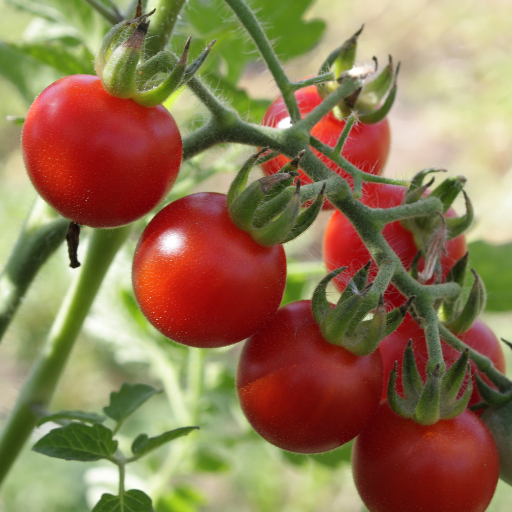
Crucially, in order to enhance the overall strength of fruits and vigor, tomato growers need to consider how they support healthy growth and develop more robust stems. Then, stronger stems can support plants through various stresses posed by the environment and handle larger fruits. Research supports that stem strength is significantly influenced by an adequate supply of nutrients, especially nitrogen and potassium. Cell divisions are important for the expansion of cells, which leads to thicker stems that have a lot of supporting tissues. Also, factors like water availability and intensity of light influence directly on stem development. Stem bending or snapping may be avoided during growth by employing staking or other mechanical support systems, so that energy is channeled towards photosynthesis and fruiting among others. Moreover, monitoring levels of nutrients as well as environmental conditions should be done periodically with respect to ensuring a sound stem structure and good plant health.
How Epsom salt contributes to vigorous stem development
Essentially, Epsom salts, also known as magnesium sulfate, impact strong stem development in plants by acting as a source of crucial magnesium needed for chlorophyll synthesis and photosynthesis itself. It has been established that magnesium allows for more uptake of nutrients, particularly phosphorous, required in root development, hence strengthening the overall plant’s physical structure. Magnesium also helps build cell walls, making them broader, thus hardening them against mechanical damage such as breaking due to their thicknesses being increased substantially. Additionally, sulfates present within it enable plants to synthesize amino acids, which are vital building blocks used in forming proteins, thus promoting general plant growth. Appropriate applications lead not only to strong stems but also better flowering ability besides improved quality fruits, thereby having a resilient, productive system at last.
The role of magnesium in cell structure and strength
For example; maintaining cell integrity within plant systems relies significantly on magnesium supply since it forms part of the cellular architecture responsible for structural stability (Marschner 1995). This central atom facilitates the production of energy by photosynthesis through its involvement in the synthesis of chlorophyll molecules. Besides, the magnesium concentration in the cell membrane helps to stabilize its structure, thereby increasing its resistance to environmental stresses. For instance, according to research done by leading horticulturists, dry matter compositions of various species range between 0.2% and 0.6% depending on growth stages (Marschner 1995). The lack of enough Mg is responsible for weak stems as well as chlorosis.
Again, magnesium is involved in over 300 enzymatic reactions since it acts as a cofactor for enzymes involved in nucleic acid synthesis and carbohydrate metabolism, among others (Marschner 1995). Moreover, the uptake of potassium and calcium, which are important osmotic regulators and aid in maintaining cellular turgor pressures, also depends on Mg2+ availability (Marschner 1995). As such, hence individual cell strength relies greatly on this mineral, having an impact on the overall robustness of the organism itself through which the rate of growth affects production levels directly. Optimal cell structure and function are therefore only achieved if suitable soil amendments or foliar applications are used so that appropriate levels of magnesium are maintained.
Can it be helpful to apply Epsom salt to prevent weak or spindly plants?
This plant is also known as epsom salt which has got magnesium sulfate that can really lower the probability of having weak or spindly plants. When used properly, it provides an additional source of magnesium that helps in nutrient uptake hence strengthening plant health overall. Adequate magnesium supplies reduce symptoms linked with nutritional deficiency including stick-thin stems and poor growth rate, according to different gardening resources. By employing this method, a gardener can improve stem quality and increase their density thus creating more robust plants capable of supporting foliage and flowers. This remedy not only aids in healthier cell building but also leads to a more vigorous reaction, resulting in stronger plants. Regular application, especially on soils lacking magnesium, will help mitigate common problems like thin growth, among others, thereby fostering a more resilient garden ecosystem.
Enhancing Flowering and Fruit Set in Tomato Plants
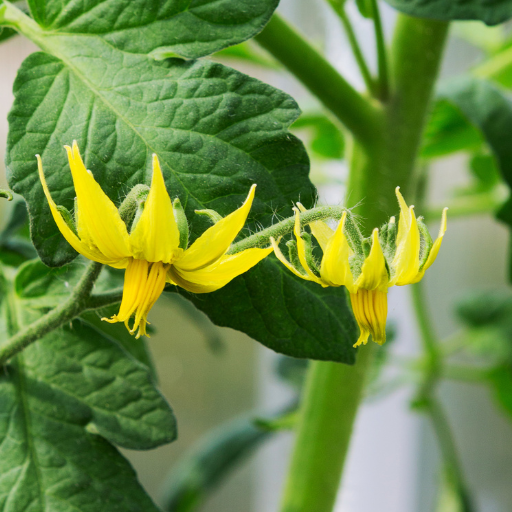
Tomato plants require certain factors of optimization to enhance flowering and fruit setting. Among the first things is ensuring that there are enough necessary nutrients, especially phosphorus, and potassium since these macronutrients are essential for flower and fruit development. Nutrient requirements can be determined through soil tests which will also help in guiding fertilization efforts. Second, one has to keep a close eye on moisture content per unit area of land; tomatoes need a consistent watering pattern to avoid stress that leads to blossom drop or reduced fruit set. Third, maintaining optimal temperature is crucial; tomatoes grow best under temperatures ranging between 70°F and 85°F (21°C – 29°C) during the day. Extreme temperatures, either too hot or cold, can hinder flowering and fruit development as well. Proper pruning and training methods may also improve air circulation and sunlight penetration leading to enhanced yields in return.Finally, through companion planting techniques, a suitable environment can lure pollinators and beneficial insects that facilitate fruit set.Diligent monitoring of the crop with timely adjustments of care practices ensures successful outcomes in all stages of flowering and fruit production.
Magnesium’s impact on fruit set as well as its development
Fruit formation by plants largely depends on various physiological processes controlled by magnesium, which plays a critical role here. It is found in chlorophyll, serving as a central part while photosynthesis occurs, thus affecting this plant’s capability of changing light energy into chemical energy, an important process needed for sugar synthesis after a long period of storage within fruits.
Magnesium helps synthesize growth hormones like auxins and gibberellins known for their roles in flower induction Studies have indicated that optimum magnesium levels in soils for fruiting crops range from 50 – 100 ppm depending on the specific variety grown and type of soil.
When Mg is deficient there may be such physiological disorders like slow ripening together with blossom-end rot besides reducing total yield. Magnesium deficiency manifests itself through interveinal chlorosis of older leaves that hampers nutrient movement thus reducing plant health and vigor.Therefore, the presence of magnesium in adequate quantities is essential for achieving good fruit set and development which calls for routine soil tests to ensure sufficiency of nutrients.
To summarize, magnesium boosts photosynthetic efficiency and affects hormonal balance, overall plant health, and nutrient transport within plants, which is hence key to successful fruit production.
Does Epsom salt increase tomato yield and size?
Magnesium sulfate commonly referred to as Epsom salt has gained popularity among garden enthusiasts because it is believed to improve both the quality and size of tomatoes. The main reason behind this is that the magnesium component present in Epsom salt can promote better nutrient uptake, leading to stronger plants that will have an impact on fruit growth as well. Below are some technical details given by several sources supporting the use of Epsom salt in tomato growing:
- Magnesium Availability: Increasing magnesium availability within the soil can enhance the photosynthetic capacity of tomato plants, as magnesium is a core part of the chlorophyll molecule. This can lead to improved energy production, which is essential for fruit growth.
- Nutrient Uptake Improvement: It has been suggested that Epsom salt might facilitate more efficient absorption of other vital elements such as nitrogen or phosphorus. Thus, nutrient uptake may increase, thereby increasing growth quality and fruit size.
- The best and most recommended amounts for Epsom salt: This is normally one tablespoon per gallon of water with a frequency of every 4-6 weeks throughout the growing season. This level guarantees enough supply of magnesium sulfate without endangering nutrient balance.
- Soil Acidity Adjustment: The addition of Epsom salt can also have a slight effect on soil pH, which in return increases the availability of nutrients, especially in slightly acidic soils (pH 6.0-7.0), which are suitable for tomato growth.
While there is anecdotal evidence that tomatoes benefit from Epsom salts, scientific research must be conducted to prove its efficacy. However, many veteran gardeners have experienced increased yields and larger fruits when using it properly alongside appropriate fertilization techniques.
Customizing Epsom Salt Use Based on Tomato Varieties
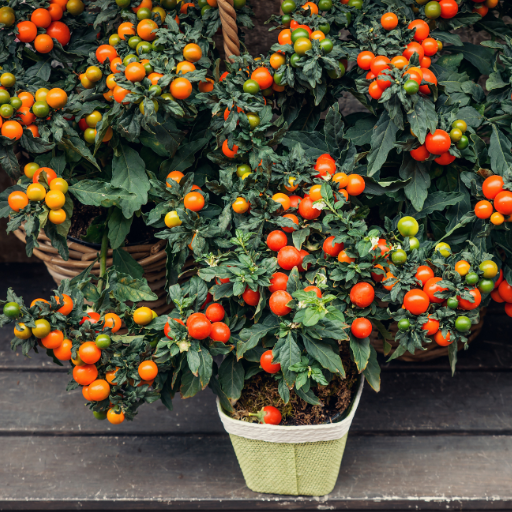
In customizing Epsom salt used based on specific tomato types, however, it is crucial to consider their various nutrient needs and growth tendencies. For instance, determinate tomatoes that reach a set height and fruit at once may require Epsom salt applications at certain stages of growth to facilitate fruiting as well as prevent blossom end rot. On the other hand, indeterminate varieties grow and bear fruits throughout the season and therefore may require more frequent usage of the salt in order to maintain nutrition uptake.
It’s also important to adjust application timing; early-season applications can help establish a strong root system, while mid- to late-season applications can bolster fruit development. The rate of Epsom salt should remain consistent, with recommended application rates of about 1 tablespoon per gallon of water, but frequency should be adjusted based on plant health observation and soil tests. As one monitors the ongoing performance of plants or nutrients, they may make changes so that different tomato cultivars will achieve maximum growth and yields.
Are there specific tomato varieties that benefit most from Epsom salt?
For this reason, some tomato varieties are known to respond much better when exposed to Epsom salts due to their special nutritional requirements and proneness to deficiency symptoms. Introducing Epsom salts into the care programs for heirloom varieties, such as Brandywine and Cherokee Purple often improves their fruit flavor profiles. Similarly Roma tomatoes which are popularly used for sauces undergo improved fruit set as well as general sturdiness following the adoption of epsom salt use in case they are grown on soils deficient in magnesium.
Moreover,cherry tomato varieties,largely known for their small size coupled with sweetness, can be enhanced by using Epsom salt, especially when cultivated under low fertility conditions.Taking soil tests before applying is necessary so as ascertain presence of enough magnesuim levels hence making effective use of epsom salt that matches exact requirements of particular types grown . Eventually, many tomatoes can be enhanced by use of epsom salt but heirloom,roma and cherry varieties exhibit the highest levels of responsitivity.
How to adjust Epsom salt application for determinate vs. indeterminate tomatoes
Epsom salts require different timing and amounts in application between determinate and indeterminate tomato breeds as a result of their distinctive growth habits. With determinates, which grow to a fixed height and produce fruit within a relatively short period, Epsom salt is best applied at planting time and early flowering stage. An alternative is applying 1 tablespoon of the salt per gallon of water into the soil during three to four weeks between growing seasons when magnesium levels are restored as plants set fruits.
On the other hand, indeterminates have a prolonged fruiting period, thus prone to nutrient depletion over time. Start with an initial application at planting time but increase it to every two or three weeks when flowering starts. Plant health, especially magnesium concentrations, should be observed carefully so that both types can perform well throughout their respective life cycles by making adjustments along the way where necessary. Regular soil testing complements these strategies, confirming the need for Epsom salt adjustments based on variable soil nutrient levels.
Can Epsom salt be used with tomatoes that are container-grown or planted in the garden?
Epsom salt can be used to good effect on both potted and outdoor tomatoes. Container gardening involves using limited amounts of soil, which means plants may use nutrients faster hence the need for more Epsom salt. It is a source of magnesium required in the synthesis of chlorophyll and general plant development. For garden tomatoes, applying Epsom salt as fertilizer improves the fruit quality by addressing magnesium shortage observed along different types of soils. In both cases; however, it is important to follow any instructions carefully so that you do not apply too much fertilizer because this will result in an uneven supply of nutrients. The best growth and yield results are achieved when frequency is adjusted according to visual observations made from the plants as well as soil nutrient tests in both containers and field gardens.
Reference sources
-
National Garden Bureau
- Source: Epsom Salts for Tomatoes? An Expert Weighs In
- Summary: This article discusses the use of Epsom salt, which is magnesium sulfate, as a micronutrient for tomato plants, explaining its role in plant health and growth.
-
PlantVillage at Penn State University
- Source: Is it a good idea to put Epsom salts on to tomato plants?
- Summary: The source evaluates the use of Epsom salts on tomato plants, highlighting potential issues such as soil leaching and advising caution in its application.
-
North Dakota State University
- Source: The Epsom Salt Myth
- Summary: This article explores the common belief in using Epsom salt for tomatoes, discussing its supposed benefits and addressing misconceptions about its effectiveness in preventing blossom end rot.
Frequently Asked Questions (FAQs)
Q: Why should I use epsom salt for tomatoes?
A: Epsom salt can help improve the overall health of tomato plants by providing essential nutrients like magnesium and sulfur, which are crucial for plant growth. Tomatoes need these nutrients to produce strong, healthy fruit.
Q: How do I add epsom salt to the soil for my tomatoes?
A: To add epsom salt to the soil, you can mix 1 tablespoon of epsom salts into the soil at the base of each plant. Doing this at the time of planting tomatoes can help ensure they get the nutrients they need.
Q: Can I use epsom salt directly on my tomato plants?
A: Yes, you can use epsom salt directly on your tomato plants. One common method is to dilute one tablespoon of epsom salt in a gallon of water and use it to water the plants. This helps the salt dissolve and prevents any potential issues with over-concentration.
Q: How often should I add epsom salt to my tomato plants?
A: For best results, you can add an epsom salt solution to your tomato plants every two to four weeks. Regular applications can help maintain consistent magnesium levels in the soil.
Q: Will epsom salt prevent blossom end rot in tomatoes and peppers?
A: While epsom salt can help improve the overall health of the plants by providing magnesium, blossom end rot is caused primarily by a calcium deficiency. However, healthier plants with adequate magnesium may be better able to absorb other nutrients, potentially reducing the risk of rot.
Q: Is epsom salt good for other plants in my vegetable garden?
A: Yes, epsom salt for plants is beneficial beyond tomatoes. Peppers and other magnesium-loving plants can also benefit from the addition of epsom salt to the soil. It is particularly useful for plants with magnesium deficiencies.
Q: How do I know if my plants need epsom salt?
A: Conducting a soil test can help determine if your soil is deficient in magnesium or sulfur. If a soil test kit shows a deficiency, adding epsom salt to the soil may help address the issue and improve plant health.
Q: Can I use a spray bottle to apply epsom salt to my tomato plants?
A: Yes, you can use a spray bottle to apply an epsom salt solution directly to the leaves of your tomato plants. Dilute one tablespoon of epsom salt in a gallon of water and spray the mixture onto the foliage. This method allows plants to absorb magnesium quickly through their leaves.
Q: What should I do if I think my soil has too much epsom salt?
A: If you suspect that your soil has too much epsom salt, conduct a soil test to check magnesium levels. Overuse of epsom salt isn’t recommended as it can lead to nutrient imbalances. Adjust your dosage based on the test results to ensure optimal plant health.






